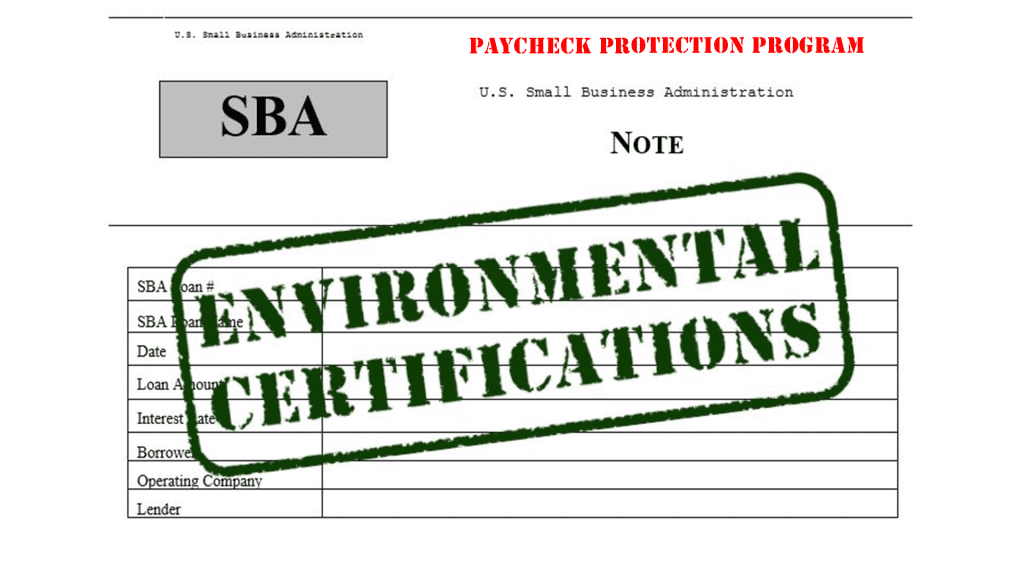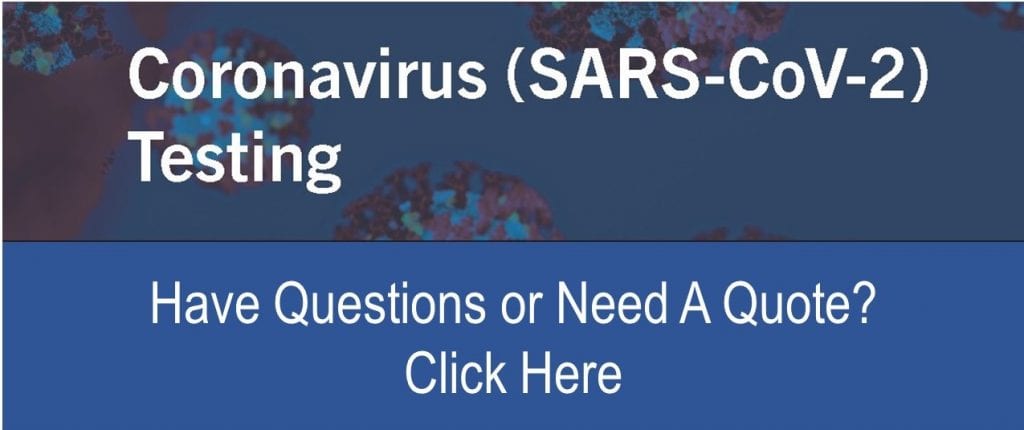
Your Paycheck Protection Program loan docs arrived and you had 10 days, from the date you were notified of the approval, to get them signed and back to the SBA. That did not leave a lot of time to review the fine print and the SBA was not going to negotiate anyway so you just signed it, right? Since then, have you reviewed the environmental certifications that you had to initial in the loan documents?
I’ve re-printed the environmental section from my loan documents below so you can familiarize yourself with the full text. Then I’ll discuss each subparagraph separately. Note that two subparagraphs are labeled d. The SBA was in a hurry!
Environmental – For any real estate where the Borrower or Operating Company is conducting business operations (the “Property”):
a. At the time Borrower submitted the Loan application, Borrower was in compliance with all local, state, and federal environmental laws and regulations pertaining to reporting or clean-up of any hazardous substance, hazardous waste, petroleum product, or any other pollutant regulated by state or federal law as hazardous to the environment (Contaminant), and regarding any permits needed for the creation, storage, transportation or disposal of any Contaminant;
b. Borrower will continue to comply with these laws and regulations;
c. Borrower, and all of its principals, have no knowledge of the actual or potential existence of any Contaminant that exists on, at, or under the Property, including groundwater, other than what was disclosed in connection with the Environmental Investigation of the Property;
d. Until full repayment of the Loan, Borrower will promptly notify Lender and SBA if it knows or suspects that there has been, or may have been, a release of a Contaminant in, at, or under the Property, including groundwater, or if Borrower or such Property are subject to any investigation or enforcement action by any federal, state, or local environmental agency (Agency) pertaining to any Contaminant on, at, or under such Property, including groundwater;
A. Compliance with Environmental Laws and Regulations
You are affirming that your business is in compliance with all environmental regulations related to cleanup or reporting of hazardous substances and any permits that may be required for any materials used, waste products generated or finished goods produced. So, if there is any type of environmental regulation, enforceable by any federal, state or local agency, you were in compliance with it.
Growing businesses have to be careful. Small quantities of hazardous substances may not have met regulatory thresholds when the business first started. But as the business grew, storage and use of those materials may have reached regulatory thresholds.
Knowledge of regulatory requirements is further complicated due to separate states, locations within states and even separate municipalities having different environmental regulations. Do you have an expert who can tell you if you are in compliance with all the different regulations?
B. Continued Compliance with Environmental Laws and Regulations
This subparagraph may seem a bit redundant with subparagraph a. The difference is that subparagraph a. stipulated the business was in compliance at the time the borrower submitted the loan application. Subparagraph b. stipulates that the business will continue to be in compliance with all environmental laws and regulations. This requirement means that someone could be paying attention to your changing and evolving business operations and confirming that new processes and policies are in conformance with the ever-changing regulations.
C. Knowledge of Contamination
In this subparagraph the borrower and all its principals affirm no knowledge of actual or potential contamination. The term “Principals” is not defined, but if we assume the SBA means leaders, and not just officers of the company, does that portend you should go to all the department heads and ask if they have knowledge of contamination? The real frightening part of this paragraph is awareness of potential contamination. An environmental professional would know that a history of spills, underground storage tanks, past disposal practices and prior operations at the property are all potential sources of contamination. Does knowledge of past operations, by someone who is not trained in environmental regulations, constitute knowledge of potential sources of contamination?
Environmental Investigation apparently refers to a Phase 1 Environmental Assessment and the liability protections that it affords to property buyers. Phase 1’s are typically conducted as part of a real estate transfer or bank refinancing. Phase 1’s are performed by an environmental professional and seek to determine if there are any recognized environmental conditions associated with a property.
D. Notification of Contamination
Until the loan is repaid, the borrower has to report any contaminant spills to the Lender and the SBA. In accordance with subparagraphs a. and b., companies already would have to report a release or potential release of contaminants to the environment. What constitutes a release varies by state, municipality and the type of substance spilled. Required regulatory agency notifications are also dependent upon the type and location of the material that was released. The loan documents merely require an additional level of reporting.
E. Indemnification for Environmental Contamination
The SBA and any subsequent lenders want liability protection. This is part of CERCLA legislation also known as Superfund where any entity that owns, has owned, or has been associated with a property is subject to joint and several liability for cleanup of any contamination that occurred at the property.
PPP Program Environmental Compliance Risk
Businesses who are participating in the PPP Program have certified that their companies are in compliance with all environmental regulations and will continue to be in compliance with all regulations. They also affirm that they, or any principals at their companies, have no knowledge of any current or potential environmental issues.
Companies should be aware that the loan documents may provide another potential enforcement avenue for environmental regulators. I can imagine a confrontation where a regulator produces a copy of the signed PPP document, where the company certified they were in compliance with all environmental regulations, when they were not. If it gets to that point, you probably will need an environmental lawyer. I have worked with several accomplished attorneys if you need one. Better yet, protect your business by obtaining an environmental compliance audit so you avoid the expense and bad publicity associated with regulatory enforcement issues.
About the Author:
Allan Blanchard is the CEO of Ambipar Response EMS, Inc. Since 1988 EMS has been helping companies with effective assessments of environmental conditions and development of possible solutions. In order to do so, EMS takes the time to understand clients’ business practices, environmental views, regulatory obligations, and operational, logistical, and monetary limitations.

